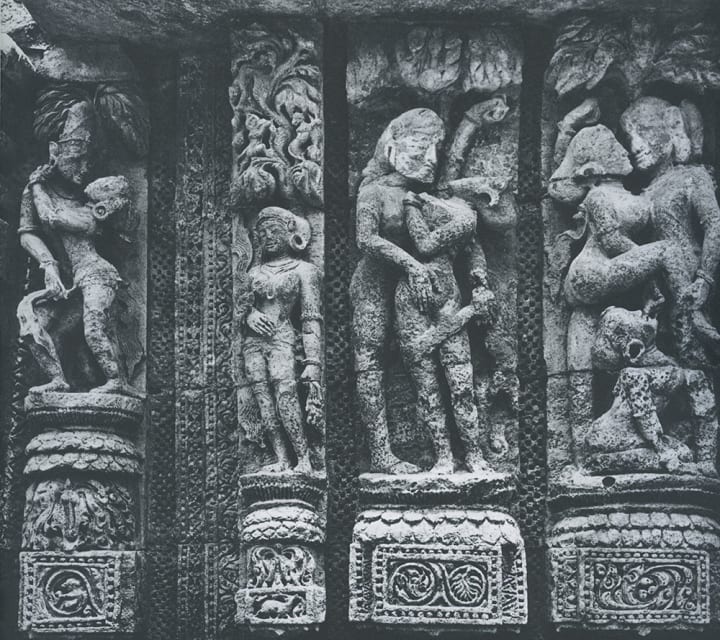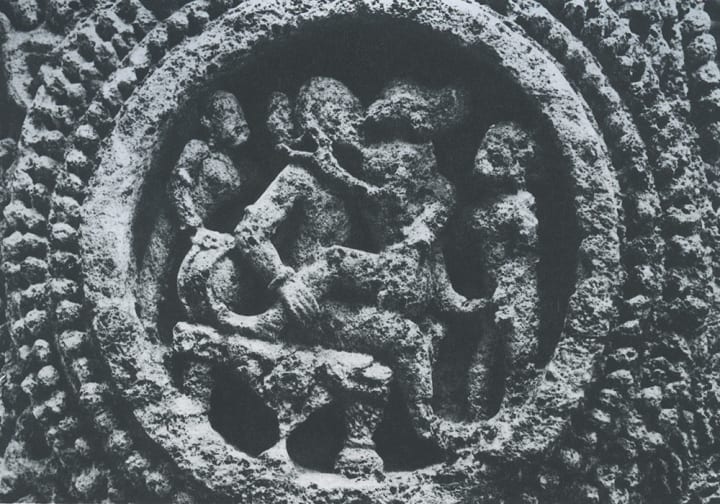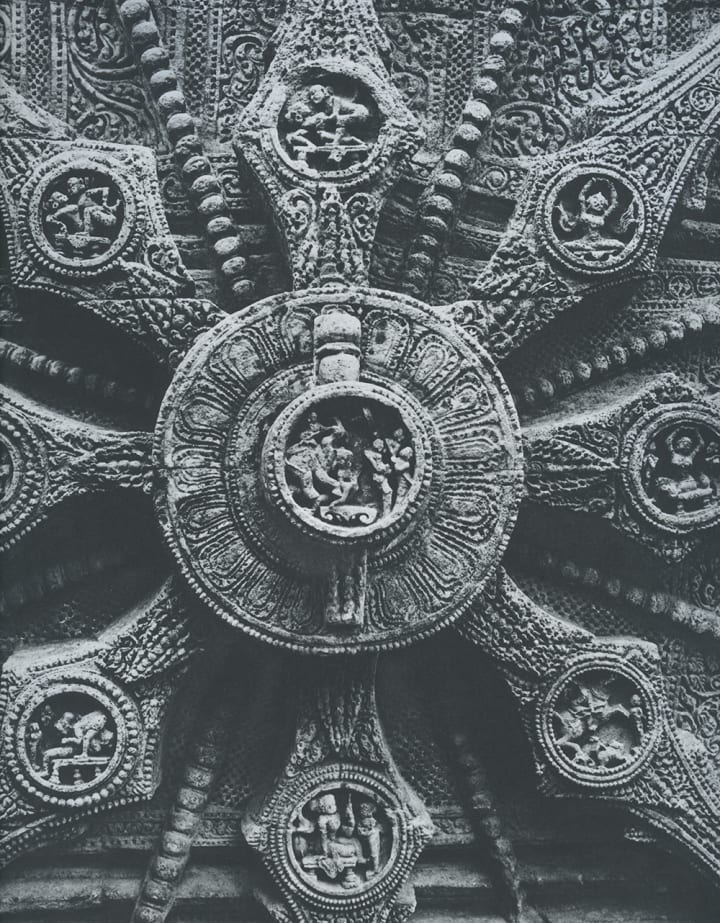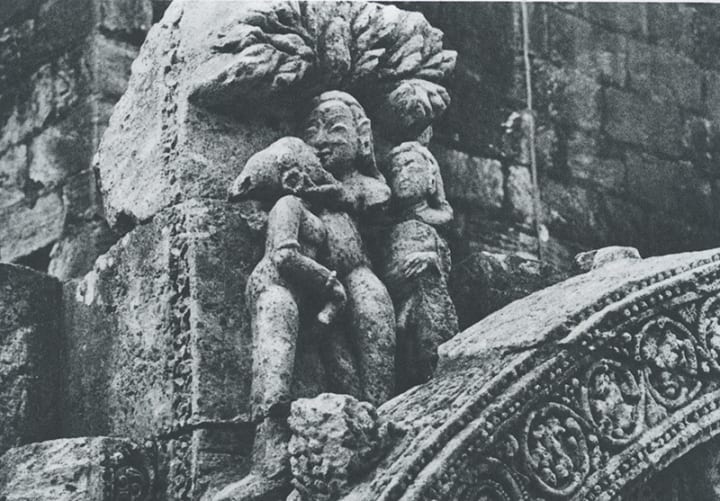Erotic Art of India
Influenced by the Kama Sutra, erotic art of India displays the strong tie between religion and human sexuality.

Perhaps the most shocking aspect of India (to Westerners, that is) is presented by their “erotic” art. Admittedly one can find such sculptures in the vaults and caverns under European cathedrals, but it is usually crude in execution and generally written off as the errant fancy of some bored sculptor. Anyway, it is considered “immoral” carving. Not in India. The temples flourish such sculptures to the glory of God, recognizing the highly developed consciousness of the connection between pleasure and life—between the natural bents and capabilities of the human being and his religion. God is the creator? Well, how else do mortals come to creation of the human race except by the way that, in the West, is hidden under shame? One school of yoga specifically declares, “Delight is religion.”
The result was that Indian religious-erotic art opened up a whole new field of sculptural endeavor, subjects untried in many other countries, poses considered in the West unsuitable for general view, and “wicked” involvement with carnal activities to prudish people. Indians ask themselves, “Can we not recognize the facts of life and make something beautiful out of them? Is there then any reason, since life could not continue without them, that they should not be represented in that other heart of life—the place of religious worship?”
Konarak

Greatest among the temples that demonstrate these values may be Konarak, on the southeast coast of India, in the state of Orissa. It used to be known as the Black Pagoda, and the story behind that name is a rather charming bit of fantasy. It was built as a temple to the sun and consequently faces east. The Portuguese ships, sailing by on their route to the riches and spices of the fabulous East, would often see the temple at sunset. At that moment, when the sun is behind Konarak, naturally, in silhouette it appears to be black. Although it is neither black nor a pagoda, the name has stuck. Actually it is built of a lovely grey stone which, in the seven centuries since it was erected by King Narashima Deva, has weathered to a wonderful texture.
Of course now it is largely ruined. Although enough remains to give one an accurate idea of the original structure (built in the shape of a huge horse-drawn cart), the original Juggernaut, the great power that it was supposed to exert is less evident. In the old days—during the adventurous voyages of the 16th century— there was a legend that an enormous lodestone had been built into the central tower of Konarak. As ships sailed by that coast, the pull of the lodestone was believed to be so great that sailors would dread the prospect of being drawn off course to certain wreckage on that treacherous stretch. Without question there were many wrecks on the reefs near Konarak. Later, people said the reason why the temple fell into ruins was that the weight of the lodestone was so great, that, eventually, it brought the roof crashing in.
Now decaying and deserted, it cannot give rise to such myths anymore. It is not even on the beach as it was designed to be. The sea line has receded, and seven miles of jungle stand between Konarak and the ocean. But the vitality and splendor of its art are eternal—a monument to life and to God.
Some 250 miles below Calcutta, the Black Pagoda was built c. 1250 and consisted originally of an assembly hall and a sanctuary tower. Today, only the assembly hall, or jagamohan, remains. The sanctuary tower, or deul, soared to nearly twice the height of Notre Dame Cathedral. Above, two Nagas—(mythological figures half-snake, half-human)—embrace to create a state of bliss when, as Indians say, “each becomes both.”







Scholars agree that much of the Black Pagoda's erotic carvings were influenced by Vatsyayana's Kama Sutra, written in Sanskrit and subtitled The Hindu Art of Love. The third and fourth images in the gallery reinforce that conjecture. Writes Vatsyayana: “The male servants of some men practice fellatio with their masters. It is also resorted to by some citizens who know each other of well among themselves. Some women of the harem, when amorously roused, practice mutual cunnilingus. Some men do likewise with women. The way of doing this kind of vulval osculation should be learned from kissing the mouth. When a man and woman lie down in an inverted order, it is called the “congress of the crow.’ ” Some of the Black Pagoda artwork has been badly worn away by sea air and the passage of time; other mutilations have been wrought less by westerly winds than by Western hands. The Hindu art of love is not without concern for tenderness. Note delicate handling of lips and hands of a female Naga kissing a male Naga (fifth image in the gallery). Gods mingle with prostitutes in the last image in the above gallery.





About the Creator
Filthy Staff
A group of inappropriate, unconventional & disruptive professionals. Some are women, some are men, some are straight, some are gay. All are Filthy.






Comments
There are no comments for this story
Be the first to respond and start the conversation.